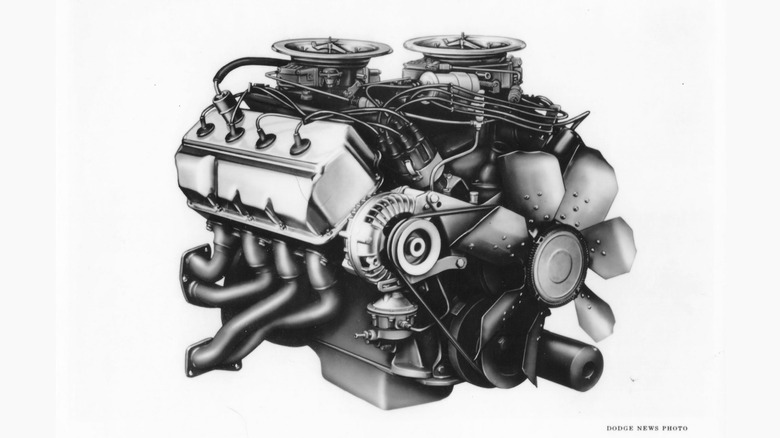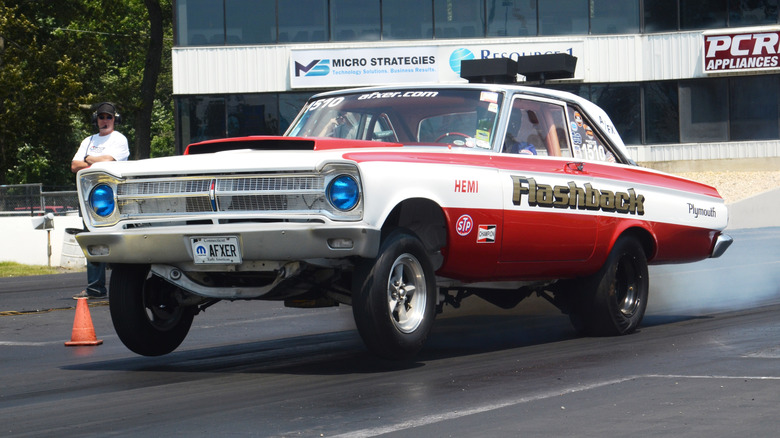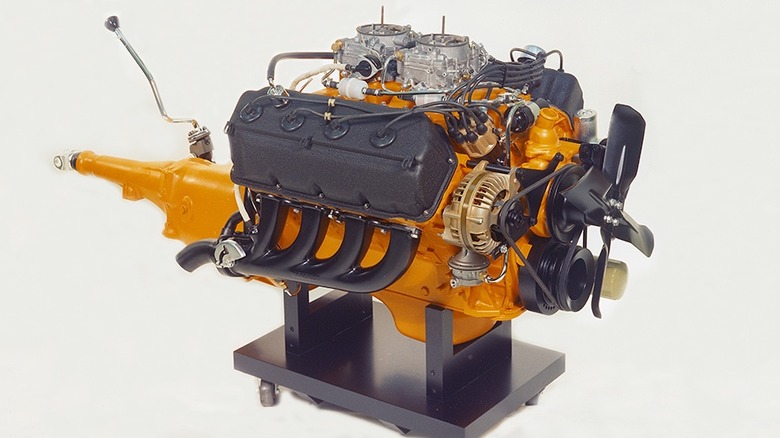Mopar Street HEMI Vs. Race HEMI Engines: What's The Difference?
The Chrysler HEMI is a very special engine. The first Chrysler HEMI arrived on the scene in 1951, making use of a unique hemispherical combustion chamber design that went against the grain of traditional engine design in the 50s. The first-generation HEMI was a halo engine for anyone in the racing scene at the time due to its massive power potential and durability, marking the start of HEMI supremacy on the drag strip.
While the first generation "FirePower" HEMI was celebrated amongst gearheads in the 1950s, it was really the second generation HEMI, introduced in 1964, that made HEMI a household name. The second-generation HEMI was born out of Chrysler's craving for dominance in both NASCAR and NHRA events. The 426 more than accomplished that mission, wiping the floor with its competition in the 1964 Daytona 500 and claiming drag strip victories later that year. In fact, the race-only engine was so dominant that it was banned from NASCAR competition in 1965.
With bitter competition lobbying against the 426, Mopar was forced to homologate the engine if they wanted the HEMI on top again. While throwing in the towel might have been the cheaper and easier option, the taste of victory is hard to forget, eventually leading Chrysler to homologate the 426 under the hoods of B-Body Chryslers in Street HEMI form for 1966. Despite some necessary changes made to the detuned street version of the engine, the 426 Street HEMI was still a widely feared monster on the road, producing an advertised 425 hp and 490 lb-ft of torque — although it was likely a lot more than that in reality.
There were actually two variants of the Race HEMI
Mopar never planned on building the 426 HEMI for anything other than motorsport when it was introduced in 1964. While most people only know the 426 HEMI in race and street trim, it was actually a bit more nuanced than that. The design team initially envisioned two variants of the 426 HEMI, with the NASCAR-focused track and NHRA-designed race variants of the engine being the first two to hit the pavement, notably excluding the street variant.
The track version of the 426 HEMI, which was the first 426 variant to be seen by the public in 1964, was specifically designed to cope with the sustained high speeds and top-end performance required for the NASCAR calendar. That made it different from the drag strip-oriented race version of the 426, which required immediate torque and all-out performance of only a handful of seconds. NASCAR regulations required that the track HEMI use a single Holley carb on an aluminum dual-plane intake manifold, unlike the Race HEMI's cross-ram, Carter carb setup.
With the first-generation HEMI being so popular in drag racing circles, Chrysler supported NHRA efforts just as much as their NASCAR endeavors. In fact, the 426 HEMI was scheduled to appear at the 1964 NHRA Winternationals in Pomona weeks before the 426's dominance at Daytona, but the new engine proved to be slower than the previous year's 426 Max Wedge cars. To solve that issue, 426 designer Tom Hoover took the engine back to the drawing board, equipping it with a new cross-ram intake, Carter AFBs, and redesigned headers, making it more competitive on the strip compared to the track variant.
What is the difference between the Mopar street HEMI and race Hemis?
After the 1964 NASCAR season, it is fair to say that Mopar's competition, primarily Ford, was more than displeased to have been left in the dust by the ferocious Track HEMI. They were so displeased, in fact, that they lobbied NASCAR's governing body to have the 426 banned for the next season, as Mopar hadn't homologated the engine for use in any of their street cars. Unfortunately for Chrysler, NASCAR agreed with Ford, banning the 426 HEMI from competition until the engine found its way under the hood of a production Mopar vehicle.
That's exactly what Chrysler did, but some serious changes had to be made to the 426 in order for it to be usable on the road. In race form, the 426 needed to be continuously fine-tuned, featured an aggressive top-end-oriented cam, and a ridiculously high compression ratio that required it to be run on race gas. Needless to say, none of those features are very consumer-friendly.
For the most part, the overall design of the Street HEMI was unchanged from its race counterpart, using very similar heads, rocker gear, and valve design. The lopey race cam was replaced in favor of a milder, but still fiery, cam that allowed for better low-rpm performance. Compression was also reduced from 12.5:1 to 10.25:1 so that consumers didn't have to fill up with jet fuel. The Race HEMI's cross-ram intake and Holley carb setup was also scrapped in favor of a more easily tunable aluminum dual-plane intake using a pair of Carter AFB four-barrel carbs. The Race HEMI was designed with optimal climates in mind, so the Street HEMI also had heat-riser tubes added to the exhaust manifold to warm the engine in cold weather.


